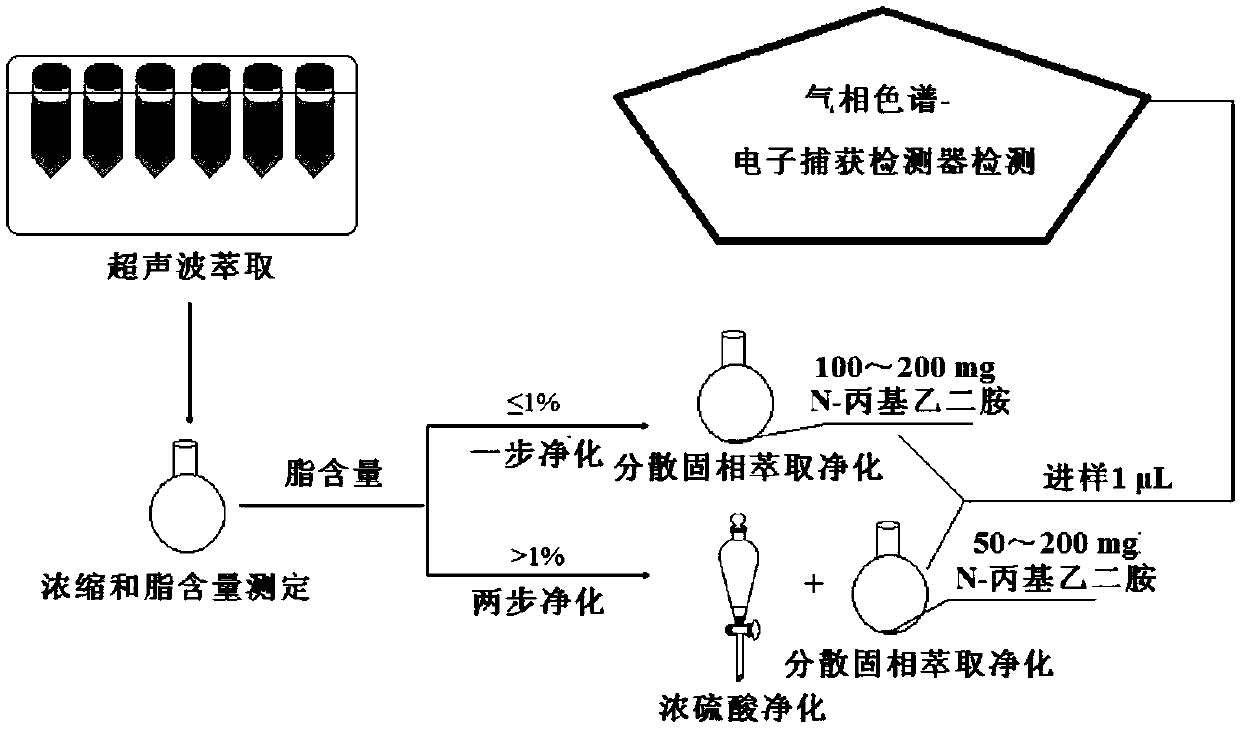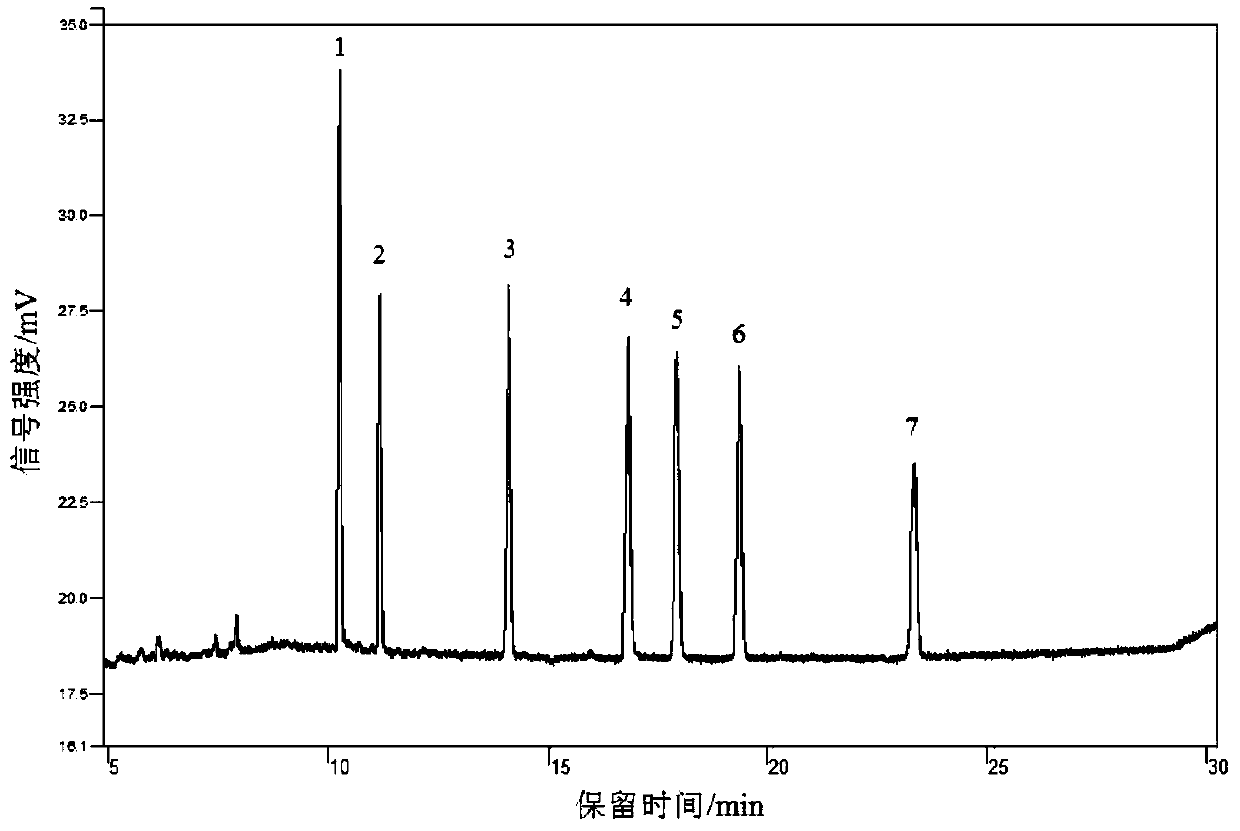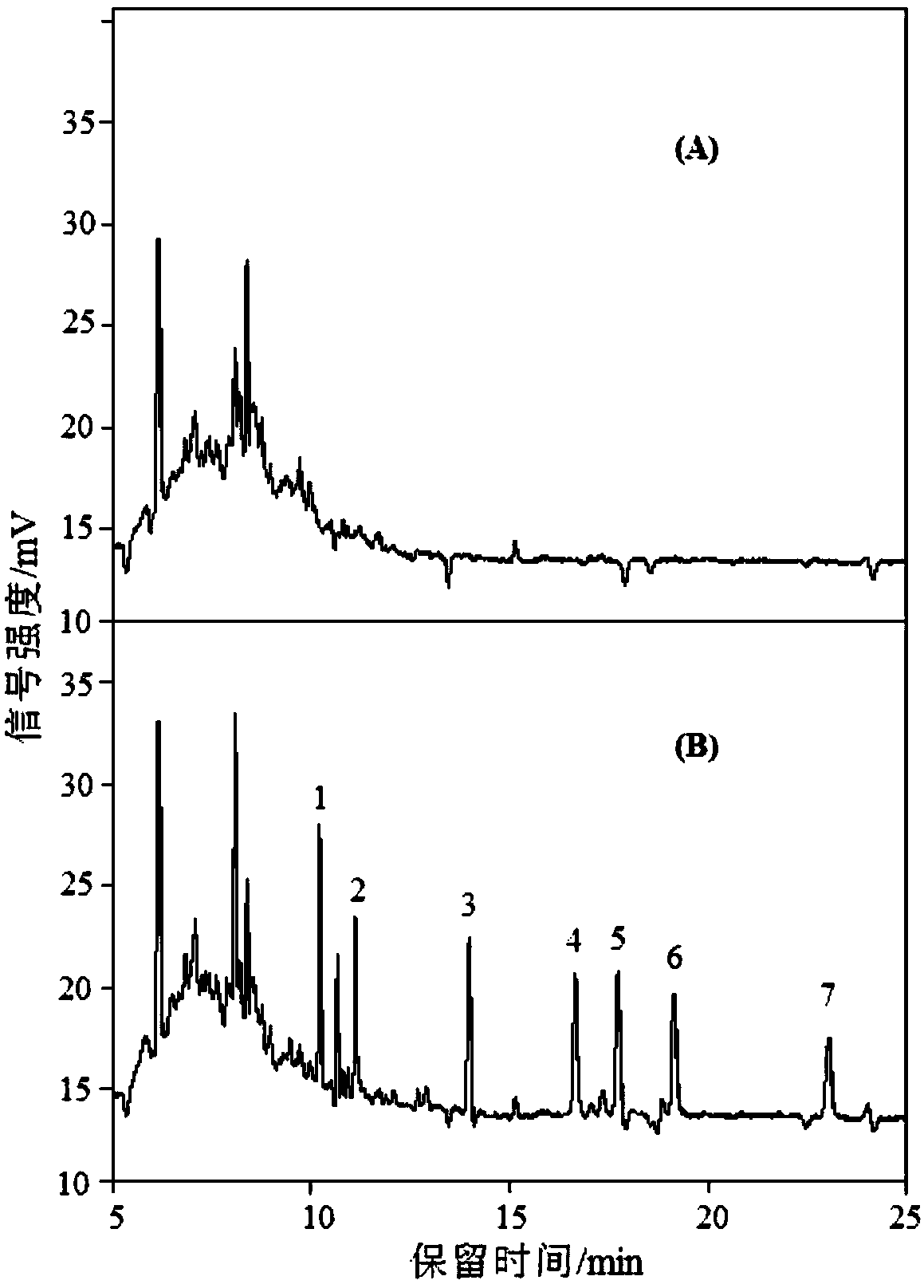Method for detecting polychlorinated biphenyls in seafood
A technology for polychlorinated biphenyls and detection methods, which can be applied to measurement devices, instruments, scientific instruments, etc., can solve the problems of high cost, many interference factors, and long time consumption.
- Summary
- Abstract
- Description
- Claims
- Application Information
AI Technical Summary
Problems solved by technology
Method used
Image
Examples
Embodiment 1
[0069] Example 1. Detection of polychlorinated biphenyls in small yellow croaker
[0070] Step (1). Sample collection and sample preparation:
[0071] Pack the collected small yellow croakers with clean aluminum foil and seal them in polyethylene bags, then transport them back to the laboratory in a portable refrigerator, remove the scales and skin, and take the muscles along the back. Cut the sample into no more than 0.5cm×0.5cm×0.5cm, homogenize it with a high-speed tissue grinder, dry it in a freeze dryer for 12 hours after homogenization, take it out and store it in a freezer at -18°C until testing;
[0072] Step (2). Sampling and ultrasonic extraction:
[0073] Weigh 4.00g of the small yellow croaker sample to be tested, add 15mL of n-hexane:dichloromethane:acetone (3:1:1, v / v), vortex for 2min, and ultrasonically extract at 35°C with 450W power for 15min; when the sample contains sulfur When the background of the compound interferes, add 2g of copper powder for ultraso...
Embodiment 2
[0105] Determination of 7 kinds of polychlorinated biphenyls in Penaeus vannamei in embodiment 2
[0106] Step (1). Sample collection and sample preparation:
[0107] The collected Penaeus vannamei were packaged with clean aluminum foil and sealed in polyethylene bags, and then transported back to the laboratory in a portable refrigerator, where the heads, shells, and appendages were removed, and the muscles were removed. Cut the sample into no more than 0.5cm×0.5cm×0.5cm, homogenize it with a high-speed tissue masher, dry it in a freeze dryer for 18 hours, take it out and store it in a freezer at -18°C until testing;
[0108] Step (2). Sampling and ultrasonic extraction:
[0109] Weigh 4.00g of the Penaeus vannamei sample to be tested, add 10mL of n-hexane: dichloromethane: acetone (3:1:1, v / v), vortex for 1min, and ultrasonically extract at 35°C with 400W power for 20min; When the background interference of sulfur-containing compounds, add 1g of copper powder for ultrasoni...
Embodiment 3
[0129] Determination of 7 kinds of polychlorinated biphenyls in embodiment 3 razor clams
[0130] Step (1). Sample collection and sample preparation:
[0131] The collected razor clams were packaged with clean aluminum foil and sealed in polyethylene bags, then transported back to the laboratory in a portable refrigerator, shelled, and edible parts were taken. Cut the sample into no more than 0.5cm×0.5cm×0.5cm, homogenize it with a high-speed tissue masher, dry it in a freeze dryer for 24 hours, take it out and store it in a freezer at -18°C until testing;
[0132] Step (2). Sampling and ultrasonic extraction:
[0133] Weigh 4.00g of the razor clam sample to be tested, add 20mL of n-hexane: methylene chloride: acetone (3:1:1, v / v), vortex for 3min, and ultrasonically extract at 40°C for 10min with 500W power; there is sulfur in the sample For the background interference of the compound, add 3g of copper powder for ultrasonic desulfurization, centrifuge at 3000r / m for 5min at...
PUM
| Property | Measurement | Unit |
|---|---|---|
| recovery rate | aaaaa | aaaaa |
Abstract
Description
Claims
Application Information
 Login to View More
Login to View More - R&D
- Intellectual Property
- Life Sciences
- Materials
- Tech Scout
- Unparalleled Data Quality
- Higher Quality Content
- 60% Fewer Hallucinations
Browse by: Latest US Patents, China's latest patents, Technical Efficacy Thesaurus, Application Domain, Technology Topic, Popular Technical Reports.
© 2025 PatSnap. All rights reserved.Legal|Privacy policy|Modern Slavery Act Transparency Statement|Sitemap|About US| Contact US: help@patsnap.com



